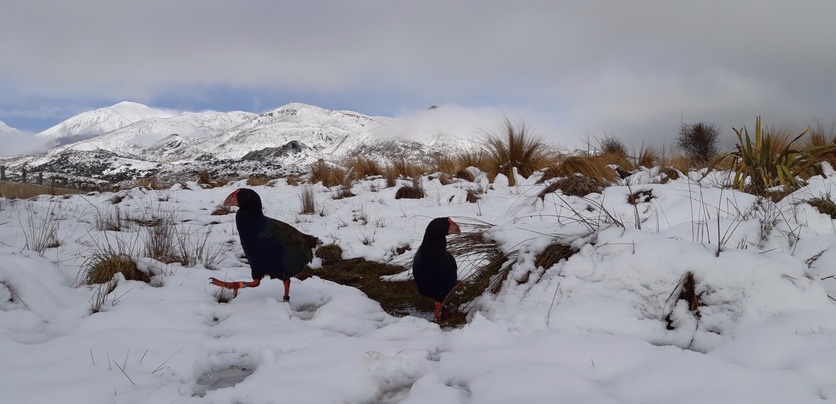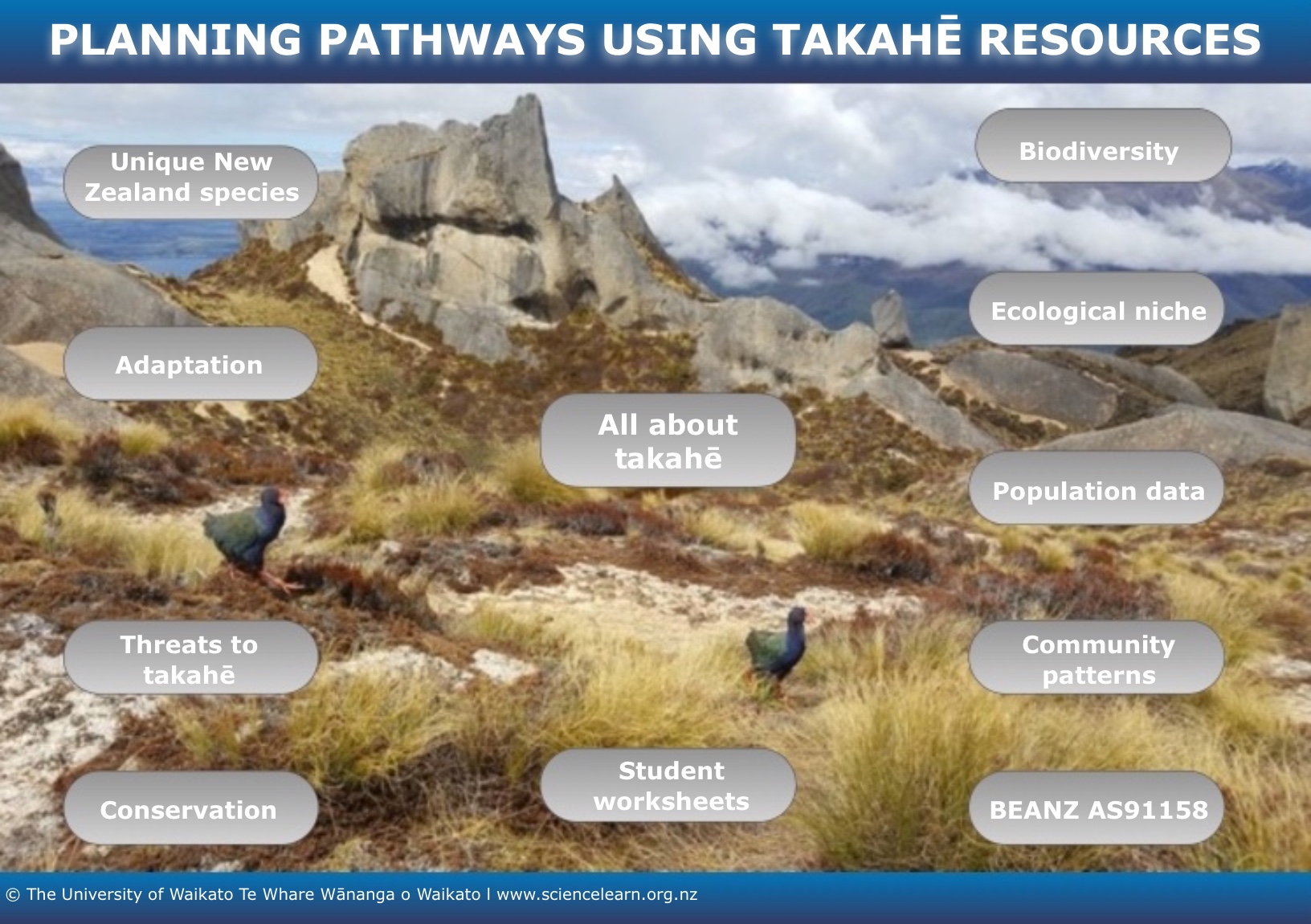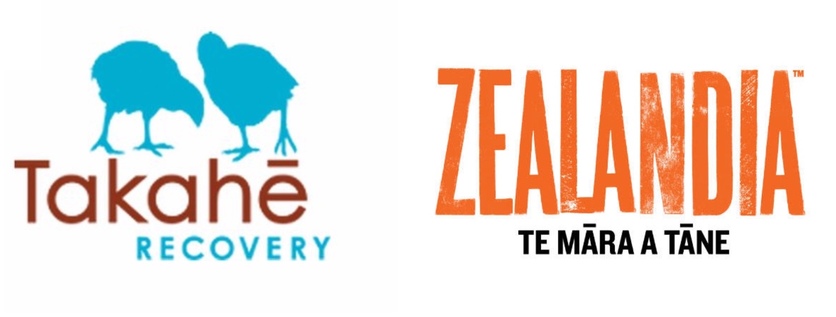The takahē (Porphyrio hochstetteri) is an endangered species and classed as nationally vulnerable under the New Zealand Threat Classification System. The takahē is a flightless bird found only in New Zealand. It was presumed extinct in 1898 but rediscovered by Dr Geoffrey Orbell and his team in a remote valley in the Murchison Mountains in 1948.
The takahē is one of our unique native species and has been a focus of conservation efforts for over 65 years, resulting in the development of world-recognised conservation techniques. As such, the takahē is a species that offers a fantastic context for learning about key biological concepts.
This article introduces ZEALANDIA resources, Hub resources and planning pathways using takahē resources.
ZEALANDIA resources to support AS91158
ZEALANDIA has produced a wide range of resources that support teaching and learning about takahē and the conservation efforts by the Department of Conservation’s Takahē Recovery Programme. Many provide opportunities to practise the science capabilities ‘Use and critique evidence’ and ‘Interpret representations’.
The resources produced in collaboration with the Takahē Recovery Programme are focused on senior biology and specifically designed for learning towards Achievement Standard 91158 Investigate a pattern in an ecological community with supervision. However, they also contain information and templates that will be useful for a younger audience.
The ZEALANDIA resources below are in a downloadable PDF format.
-
Teacher resources
-
Worksheets
-
Thinking tools
-
Data appendices
-
Hub resources
-
Planning pathways using takahē resources
Teacher resources
- Suggested teaching programme for year 12 ecology – Where have all the takahē gone? This outline is a suggested approach for teachers using the ZEALANDIA resources that covers key ecological concepts along with supporting content, resources, learning activities, assessment ideas and vocabulary.
- Takahē and the Takahē Recovery Programme Fact Sheet This fact sheet has information for 2018-2019 about the Takahē Recovery Programme.
- Student introduction to task: Where have all the takahē gone? This information sheet describes what students will investigate in relation to the plight of the takahē and assessment requirements for AS91158.
- Useful takahē sources This is an extensive list of links to additional resources about takahē, conservation issues and control of introduced mammals in New Zealand.
- A marking scheme, assessment schedule, rubric and student exemplars can be found on the BEANZ (Biology Educators Association of New Zealand) website.
Worksheets
- Biodiversity in New Zealand This worksheet supports students’ understanding of New Zealand's biodiversity. It highlights biological definitions, predator-prey relationships, flightlessness and the impact of humans.
- Takahē at ZEALANDIA This worksheet supports students when they visit ZEALANDIA to find out more about takahē. It also could be used when visiting any sanctuary that has takahē.
- Interrelationships in the Murchison Mountains community This worksheet explores concepts of population modelling by supporting students to interpret trends in predator/prey and population graphs.
- Takahē Recovery Plan 2007 to 2012 This worksheet helps students interpret information from the 2007–2012 Takahē Recovery Plan.
- The demography of takahē This worksheet uses the article Demography of takahe (Porphyrio hochstetteri) in Fiordland: environmental factors and management affect survival and breeding success by Hegg et al. and the Stuff article Stoats decimating takahe in Fiordland to explore challenges faced by takahē.
- Stoats and takahē This worksheet uses information from the Stuff article Stoats decimating takahē in Fiordland, the map in Sightings of takahē in Fiordland (1987–2008) and the graphs in Takahē adult survival in the Murchison Mountains in both trapped and untrapped areas to look at interrelationships between stoats and takahē.
- Interspecific relationships impacting takahē This worksheet supports students to record and sort information about interspecific relationships impacting takahē.
- Takahē video review template This worksheet supports students to record and sort ideas while watching the video documentary Project Takahē.
- Milestone checkpoints for AS91158 A checklist and list of resources for students working towards AS91158.
- Final help sheet for AS91158 An in-depth help sheet with notes for students working towards AS91158.
- Resource dot jot sheets for evaluating research This is a generic worksheet for recording and evaluating information from sources like newspapers or websites.
- Evaluating data recording sheets This worksheet is for recording source information, explaining data and recording ideas from others.
Thinking tools
- Ecological niche photos These photos of a red deer, stoat, snow tussock and takahē can be used alongside the Ecological niches visual organiser.
- Ecological niches visual organiser worksheet This template is an ideas organiser to consider habitat and ecological niches of red deer, stoat, snow tussock and takahē.
- Compare and contrast takahē vs pūkeko visual organiser This template is an ideas organiser to examine similarities and differences between pūkeko and takahē.
- Compare and contrast Murchison Mountains vs offshore islands visual organiser This template is an ideas organiser to examine similarities and differences between Murchison Mountains and offshore islands.
- Adaptations visual organiser This template is an ideas organiser to consider adaptations of red deer, stoat, snow tussock and takahē.
- Interrelationships in the Murchison Mountains visual organiser This template is an ideas organiser to consider the interrelationships between the takahē, stoat and red deer.
- Management options for the continued survival of takahē – advantages, disadvantages table/worksheet This template is an ideas organiser to consider the advantages and disadvantages of various management options for takahē.
- The ecological niche – takahē/habitat/adaptations information sheet This information sheet summarises key considerations related to a habitat’s physical conditions and resources and an organism’s adaptations and interrelationships with other organisms.
Data appendices – information for AS91158
- Prehistoric distribution of takahē – map
- Sightings of takahē in Fiordland (1987–2008) – map
- Takahē population trends (1981–2008) – line graph/Murchison/offshore islands
- Impact of temperature on adult takahē (1981–1994) – line graph
- Impact of deer culling operations in the Murchison Mountains (1963–2008) – line graph
- Stoat and rat trap kills (2003–2018) – line graphs
- Latest takahē population trends (2000–2017) – line graphs sanctuary/Fiordland
- Takahē population growth rate (2000–2016) – line graph
- Takahē population recruitment versus mortality (2006–2017) – line graph
- Takahē census results – Murchison Mountains 2014 – map
- Deer kills and helicopter hunting tracks in the Murchison Mountains – map
- Murchison Mountains stoat traps 2019 – map
- Stoat and rat trap kills (2006–2016) – line graph
- Relationship between the mean temperature and flowering in Chionochloa spp (masting and global warming) – bar graph
- Effect of climate change on masting Chionochloa (climate change/masting) – graphs on temperature and flowering
- Additional data from Takahē Recovery Programme (DOC) annual report 2017-18 – graph and tables
- Takahē adult survival in trapped and untrapped areas in the Murchison Mountains – graphs and table
Hub resources
The Hub has a suite of resources about takahē and the efforts to conserve them:
- Takahē – an introduction – article
- Takahē – question bank – article
- The takahē’s ecological niche – article
- The takahē’s evolutionary history – article
- Threats to takahē – article
- Takahē conservation efforts – article
- Abiotic and biotic factors for takahē – activity
Takahē – new genetic research in 2023 has shed new light on the evolutionary history of the takahē and uncovered the significant impact of humans and past climate change on this icnoic species.
Conserving native birds – introduction curates Hub resources about native bird conservation, their roles in ecosystems, adaptations and more!
Building Science Concepts: Birds explores the science concepts that underpin knowledge and understanding about birds and their structure, function and adaptations.
To consider some of the ethical dilemmas associated with conservation, see
- Ethics in bird conservation – activity
- Ethics and bird conservation – case study – teacher PLD
Bringing back the birdsong is a Connected journal article with teacher support material published by the Ministry of Education.
Planning pathways using takahē resources
This interactive groups Hub and ZEALANDIA resources into key science and teaching concepts that underpin takahē conservation.
Related collections
The Science Learning Hub team has curated two collections of resources with takahē as the context for learning:
- Takahē – conservation and ecology supports NZC Living World levels 2 and 3 with notes on key science concepts and planning.
- Takahē – science capabilities matches resources with specific capabilities. Notes provide questions, which in turn provide practice in using and understanding the capabilities.
Login to make this collection part of your private collection, just click on the copy icon. You can then add additional content, notes and make other changes. Registering an account for the Science Learning Hubs is easy and free – sign up with your email address or Google account. Look for the Sign up button at the top of each page.
Related content
Bringing back the birdsong and What Alice saw are Connected journal articles with teacher support materials published by the Ministry of Education.
Useful links
TKI uses the book Takahē: Back from the Brink to explore the science capability ‘Use evidence to support ideas’. The book is part of the Applications series, and copies may be available in New Zealand secondary schools. If not, check the book’s availability via Down the Back of the Chair or the National Library.



